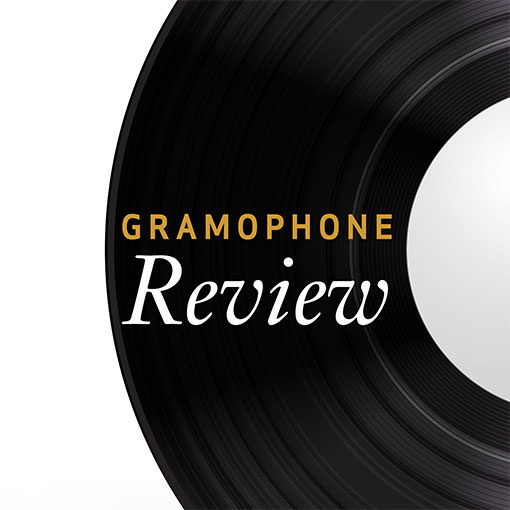Bruckner Symphony No 8
View record and artist detailsRecord and Artist Details
Composer or Director: Anton Bruckner
Label: Olympia
Magazine Review Date: 1/1990
Media Format: CD or Download
Media Runtime: 79
Mastering:
ADD
Catalogue Number: OCD238

Tracks:
| Composition | Artist Credit |
|---|---|
| Symphony No. 8 |
Anton Bruckner, Composer
Anton Bruckner, Composer Evgeni Svetlanov, Conductor USSR Academy Symphony Orchestra |
Author: Richard Osborne
The disturbing thing about this account of Bruckner's Eighth Symphony is that, given the premises on which many people in this country currently base their critical judgements, there are those who will probably like and approve it. It is raw and rather savage, Bruckner in a Lear-like temper, a kind of Tolstoyan King Anton of the Steppes, far removed from the profoundly Austrian temper of versions by Karajan or Giulini (both DG). It also has the enormous potential attraction of being rather coarsely played, thus adding what some regard as a degree of 'danger' an element of 'spontaneity' to the proceedings. I suspect that even liberal English opinion may draw the line at some of the quiet, highly idiosyncratic horn playing or the Salvation Army tenor tubas in the slow movement (bar 68, 5'55'' is a representative moment) but the slightly untuned woodwinds can add a certain frisson to the music and there are trumpets on hand to rasp and whip one into a real lather of excitement, though they signally fail to terrify in the way Furtwangler's Viennese or Berlin players used to do in the first movement coda, described by Bruckner himself as a ''death watch''.
The recording was made in Moscow in 1981 and seems to have been staged in a large empty hall with quite a deep perspective, so much so that there is a good deal of reverberant space round the woodwind, and brass that can occasionally take on a distant, Leonore No. 3-like perspective in certain passages. In full cry, the sound sharp-edged and reverberant, this is a Bruckner Eighth played from the gallery for the gallery.
Much of it is too loud. The opening of the Adagio lacks inwardness, and Svetlanov breaks up the pulsing string accompaniment into tight little articulated staccato units with a revamped pulse that's almost as tappable as the Allegretto of the Seventh Symphony of Beethoven. Yet even here there are those who will probably think it all rather fine, enlisting Bruckner's bowing-marks or some such thing as evidence for the defence. The distrust of all legato playing is becoming endemic nowadays, with the result that even Bruckner can be made to sound like crumbled Weetabix.
Svetlanov himself is capable of building a symphonic structure and exerting control over it and to some extent he achieves this here. But his controlled, often powerful way with the first movement is not quite enough when the playing lacks dynamic light and shade and when the rhythmic progress is ultimately rather portentous. He misses the mingled sense of breadth and steady forward movement that Karajan has, and he misses too, the terrible dramatic irony of a movement that persistently stretches forward to a tonic surety that it never succeeds in embracing.
Olympia advertise the text as being edited by Robert Haas. This is at best a guess. Svetlanov observes cuts that Haas restored. If I could have five pounds for every misleading textual attribution I have encountered on Bruckner recordings I have reviewed, bought, or heard in the last 20 years I could afford to go on a month's pilgrimage to St Florian itself.'
The recording was made in Moscow in 1981 and seems to have been staged in a large empty hall with quite a deep perspective, so much so that there is a good deal of reverberant space round the woodwind, and brass that can occasionally take on a distant, Leonore No. 3-like perspective in certain passages. In full cry, the sound sharp-edged and reverberant, this is a Bruckner Eighth played from the gallery for the gallery.
Much of it is too loud. The opening of the Adagio lacks inwardness, and Svetlanov breaks up the pulsing string accompaniment into tight little articulated staccato units with a revamped pulse that's almost as tappable as the Allegretto of the Seventh Symphony of Beethoven. Yet even here there are those who will probably think it all rather fine, enlisting Bruckner's bowing-marks or some such thing as evidence for the defence. The distrust of all legato playing is becoming endemic nowadays, with the result that even Bruckner can be made to sound like crumbled Weetabix.
Svetlanov himself is capable of building a symphonic structure and exerting control over it and to some extent he achieves this here. But his controlled, often powerful way with the first movement is not quite enough when the playing lacks dynamic light and shade and when the rhythmic progress is ultimately rather portentous. He misses the mingled sense of breadth and steady forward movement that Karajan has, and he misses too, the terrible dramatic irony of a movement that persistently stretches forward to a tonic surety that it never succeeds in embracing.
Olympia advertise the text as being edited by Robert Haas. This is at best a guess. Svetlanov observes cuts that Haas restored. If I could have five pounds for every misleading textual attribution I have encountered on Bruckner recordings I have reviewed, bought, or heard in the last 20 years I could afford to go on a month's pilgrimage to St Florian itself.'
Discover the world's largest classical music catalogue with Presto Music.

Gramophone Digital Club
- Digital Edition
- Digital Archive
- Reviews Database
- Full website access
From £8.75 / month
Subscribe
Gramophone Full Club
- Print Edition
- Digital Edition
- Digital Archive
- Reviews Database
- Full website access
From £11.00 / month
Subscribe
If you are a library, university or other organisation that would be interested in an institutional subscription to Gramophone please click here for further information.





